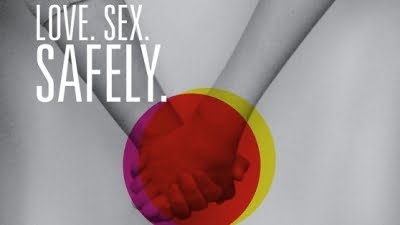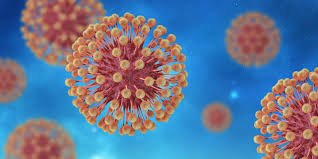Sexual Health
Sexual Pleasure & Orgasm
Sexual Pleasure And Desire
Sexual desire and pleasure are difficult to study and define. Why? Because they both vary so widely for each individual and among cultures. Sexual desire can be directed at a specific gender, body type, body part, personality trait or a million other aspects of our individual selves.
Sexual pleasure can range from entirely mental fantasies, to masturbation of the genitals, to the simple touch of a partner’s fingertips. Sexual pleasure has few restrictions with one glaring exception – consent. Consent should be the most pleasurable part of sex – knowing that you and your partner(s) are willingly engaging in sexual activities together and expressing your sexuality in a mutually pleasurable way.
Orgasm
An orgasm is often defined as the peak or climax of sexual arousal. The experience of orgasm is different for everybody and from one sexual encounter to the next. Orgasms can be experienced through mental and/or physical stimulation from many different types of sexual activity, including:
- masturbation
- partner sex
- fantasy
- touch
- kissing
- or during sleep
Physically, an orgasm can include a release of built-up muscle tension, muscle contractions in the genital and anal area, increased heart rate and faster breathing.
Two researchers from McGill University have proposed a model of orgasm that encompasses all three different elements of orgasm:
- Sensory – This refers to all the physiological experiences in our body, including feeling heat, muscle tension and release, heart rate, blood pressure, etc.
- Evaluative – This is the way we experience and evaluate what’s happening; does it feel good or bad, pain or pleasure, intense or mild?
- Affective – Or our emotional response during and after orgasm; do we feel intimacy or distance, transcendent or grounded, happy or sad.
This model is recommended for at least three reasons. First, this definition focuses on the experience and not the sexual behaviors. It doesn’t refer to what body part is stimulated, or how it is stimulated. This makes sense since we don’t all have the same bodies, and we don’t all get sexual pleasure in the same way. Second, this definition of orgasm complicates matters. Most traditional models of orgasm have been based on Masters and Johnsons sexual response cycle, which is a useful but overly narrow definition of orgasm. Finally, this model doesn’t favor one aspect of orgasm over another.
Female Orgasm
Some women don’t experience orgasm during vaginal or anal penetration. Few women will orgasm through vaginal or anal stimulation alone; stimulation of the clitoris is usually needed. Some women are able to have several orgasms in a row (multiple orgasms). For some women, ejaculation may accompany an orgasm. See Sexual Response Cycle below.
Male Orgasm
For men, ejaculation usually accompanies orgasm. Most men experience a refractory period (rest period) after an orgasm when they are unlikely to have another erection or orgasm. The length of the rest period can vary from a few minutes to a few hours, depending on the person, his age, the situation, etc. See Sexual Response Cycle below.
Sources:
- Levin, R.J. “An Orgasm Is…Who Defines What An Orgasm Is?” Sexual and Relationship Therapy. Volume 19, Number 1 (2004): 101-107.
- Mah, K. & Binik, Y.M. “The Nature of Human Orgasm: A Critical Review of Major Trends” Clinical Psychology Review. Volume 21, Number 6 (2001): 823-856.
Sexual Response Cycle
Sexual response is usually measured in the body. Things like increased heart rate, flushed skin, dilation of the pupils, heightened awareness, are all parts of sexual response. Sex researchers have also traditionally defined male sexual response as distinct and different from female sexual response.
Sexual response cycles were first devised as a way for scientists, doctors, and therapists to try and make sense of how our bodies respond to sexual stimulation. William Masters and Virginia Johnson conducted the original research in 1966 that proposed a four-phase model of the sexual response cycle.
The four phases were:
- Excitement phase – Begins with vasocongestion (increase in blood concentrated in genitals and/or breasts) followed by lubrication of the vaginal walls (transudation), increased heart rate and blood pressure, and sex flush (blood “rash” on chest or breasts) and possibly erection of the nipples. Lasts anywhere from a few minutes to hours.
- Plateau phase – Continuation of excitement phase. Testicles may swell and clitoris retracts under the clitoral hood while outer third of the labia enlarge. Lasts from a few seconds to minutes.
- Orgasm phase – In women: usually muscle contractions in the pelvis, vaginal walls, rectum and retraction of the clitoris. In men: contraction in the urethra, muscles around the base of the penis, rectum and (if orgasm and ejaculation occur at the same time) expulsion of semen.
- Resolution phase – The body returns to pre-excitement conditions: blood leaves the genitals, erections go down, and heart rate and blood pressure decrease. In women, this time might include continued stimulation to further orgasms. Men often go into a refractory stage, where they cannot be re-stimulated to orgasm.
Helen Singer Kaplan proposed a slightly different triphasic model of sexual response. Her proposal grew not out of physiological research in a laboratory, but out of her clinical experience as a sex therapist. For Kaplan, sexual response included:
- Desire
- Excitement
- Orgasm
This model focuses on both psychological (mental) and physiological (physical) arousal and is slightly easier to conceptualize than the Masters & Johnson model. Kaplan focused on sexual desire because many of her clients has problems around sexual desire that impacted their ability to move into the excitement or orgasm phases.
References:
- Kaplan, H.S. The New Sex Therapy: Active Treatment of Sexual Dysfunctions. New York: Routledge, 1974
- Masters, W.H. & Johnson, V.E. Human Sexual Response.Boston: Little, Brown and Co. 1966.








